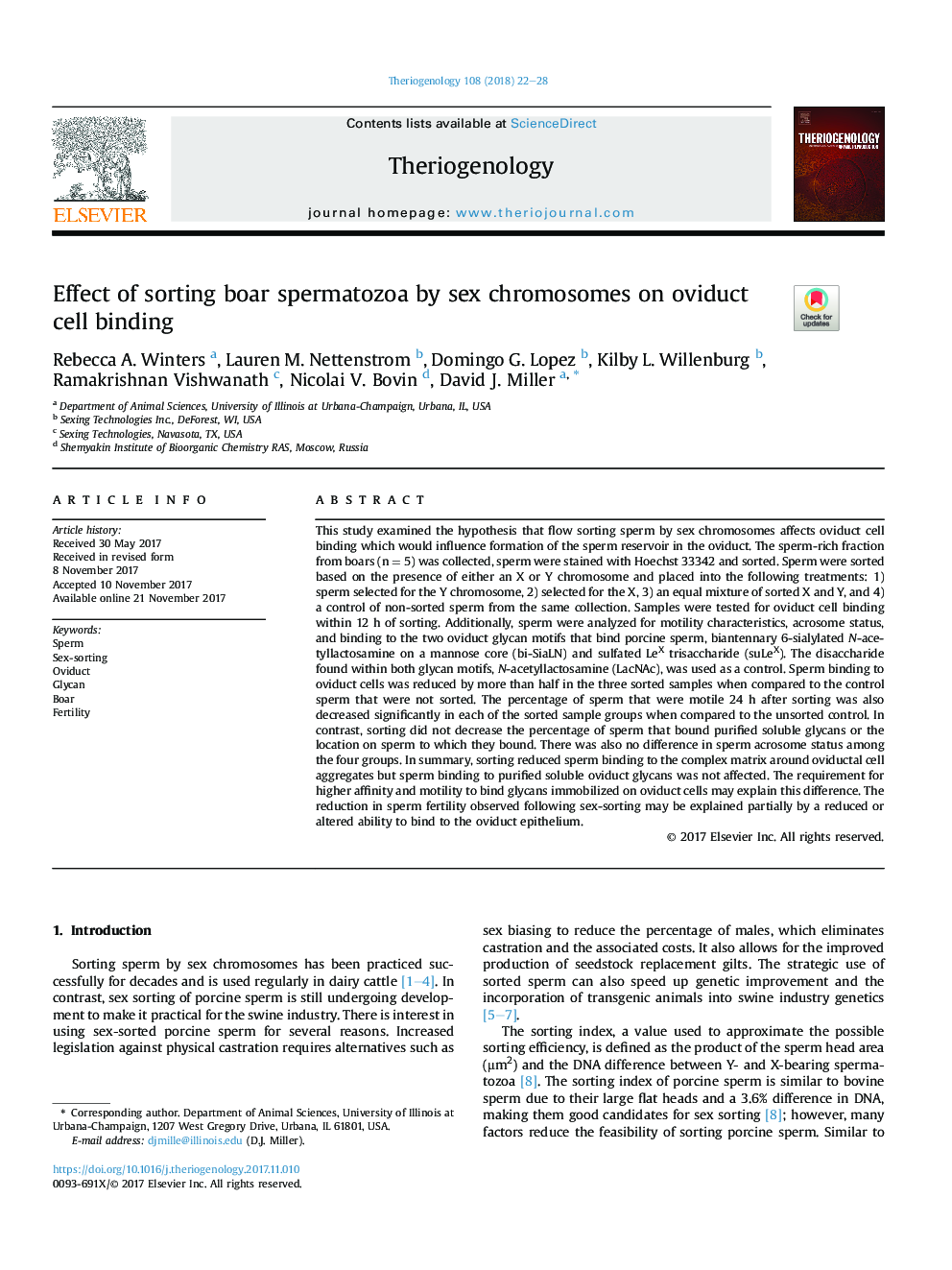| کد مقاله | کد نشریه | سال انتشار | مقاله انگلیسی | نسخه تمام متن |
|---|---|---|---|---|
| 8427543 | 1546061 | 2018 | 7 صفحه PDF | دانلود رایگان |
عنوان انگلیسی مقاله ISI
Effect of sorting boar spermatozoa by sex chromosomes on oviduct cell binding
ترجمه فارسی عنوان
اثر اسپرم کبابی مرتب سازی بر اساس کروموزوم های جنسی بر روی اتصال سلول های تخمک
دانلود مقاله + سفارش ترجمه
دانلود مقاله ISI انگلیسی
رایگان برای ایرانیان
کلمات کلیدی
موضوعات مرتبط
علوم زیستی و بیوفناوری
علوم کشاورزی و بیولوژیک
علوم دامی و جانورشناسی
چکیده انگلیسی
This study examined the hypothesis that flow sorting sperm by sex chromosomes affects oviduct cell binding which would influence formation of the sperm reservoir in the oviduct. The sperm-rich fraction from boars (n = 5) was collected, sperm were stained with Hoechst 33342 and sorted. Sperm were sorted based on the presence of either an X or Y chromosome and placed into the following treatments: 1) sperm selected for the Y chromosome, 2) selected for the X, 3) an equal mixture of sorted X and Y, and 4) a control of non-sorted sperm from the same collection. Samples were tested for oviduct cell binding within 12 h of sorting. Additionally, sperm were analyzed for motility characteristics, acrosome status, and binding to the two oviduct glycan motifs that bind porcine sperm, biantennary 6-sialylated N-acetyllactosamine on a mannose core (bi-SiaLN) and sulfated LeX trisaccharide (suLeX). The disaccharide found within both glycan motifs, N-acetyllactosamine (LacNAc), was used as a control. Sperm binding to oviduct cells was reduced by more than half in the three sorted samples when compared to the control sperm that were not sorted. The percentage of sperm that were motile 24 h after sorting was also decreased significantly in each of the sorted sample groups when compared to the unsorted control. In contrast, sorting did not decrease the percentage of sperm that bound purified soluble glycans or the location on sperm to which they bound. There was also no difference in sperm acrosome status among the four groups. In summary, sorting reduced sperm binding to the complex matrix around oviductal cell aggregates but sperm binding to purified soluble oviduct glycans was not affected. The requirement for higher affinity and motility to bind glycans immobilized on oviduct cells may explain this difference. The reduction in sperm fertility observed following sex-sorting may be explained partially by a reduced or altered ability to bind to the oviduct epithelium.
ناشر
Database: Elsevier - ScienceDirect (ساینس دایرکت)
Journal: Theriogenology - Volume 108, 1 March 2018, Pages 22-28
Journal: Theriogenology - Volume 108, 1 March 2018, Pages 22-28
نویسندگان
Rebecca A. Winters, Lauren M. Nettenstrom, Domingo G. Lopez, Kilby L. Willenburg, Ramakrishnan Vishwanath, Nicolai V. Bovin, David J. Miller,
